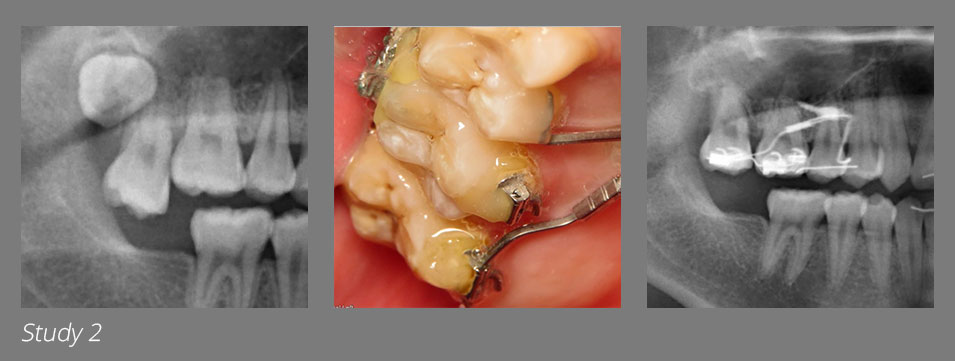As most of you know the science behind successful orthodontic treatment requires a thorough understanding of biology and physics. For example, Newton’s Third Law: “For every action, there is an equal and opposite reaction,” aptly describes the literal force necessary for tooth movement, realignment, and bite correction. Therefore, it becomes evident how Orthodontics uses physics, including the understanding of torque, pressure, pulling, pushing and the appropriate counteracting forces to straighten teeth.
According to Newton, forces always come in pairs -- equal and opposite. But what about those unusual cases where a simple back or forth isn’t going to simply correct an orthodontic problem? Sometimes equal and opposite means that in order to move a tooth the desired way, you must work up, down, in and even outside the mouth. In the past, treatment usually involved the use of headgear to be worn for 12 or more hours--not the preferred method of treatment for the patient to be sure. Fortunately, orthodontics has advanced in the form of a miniature titanium screw, known as temporary anchorage devices (TADs).
At Forever Smiles, we have successfully implemented these mini biocompatible dynamos via implant into the jawbone to serve as realignment anchors for several years now. As the name implies, these mini-implants are used temporarily, and removed after treatment once the teeth are aligned in the proper position. In some cases, Dr. Razdolsky can even employ TADs as an alternative to headgear altogether, allowing for greater results in a less invasive way. Overall, TADs deliver a more predictable result, may significantly reduce treatment time, may help avoid the removal of teeth, and prevent certain surgical procedures.
But are TADs all they are purported to be? Current studies published in 2020 and 2021 evaluated the effectiveness of orthodontic intrusion using TADs verses other orthodontic techniques. To note, intrusion of teeth involves moving them further into the bone in cases involving an open bite or gummy smiles, for example. The published results concluded that “the stability of molar intrusion using TADs can be considered relatively similar to that reported to surgical approaches.”(González Espinosa D;de Oliveira Moreira PE;da Sousa AS;Flores-Mir C;Normando D;)
In a real-world case study, let’s look at gummy smiles treated by Dr. Razdolsky with TADs. You have probably encountered a few people with gummy smiles by now. Normally, upon smiling the upper lip should cover the upper central teeth by 1 mm. However, scientific studies have demonstrated that patients with a gummy smile have excessive gingival display of 3 or more millimeters, and no lip over tooth coverage. While many treatment options are available, let’s explore the use of TADs.

Our first patient in this case review presented at Forever Smiles with 5mm of Gingival excess when smiling (Study 1). Cephalometric measurements exhibited Upper central incisor is below Upper lip 9mm whereas normal is 2mm in repose. So, we needed 7 mm intrusion to achieve normal measurements. Cephalometrics also shown Vertical Skeletal Excess but patient has rejected LeFort posterior impaction surgical option. It is worth mentioning that the U lip droops down 1mm with every decade.
Through the use of TADs, Dr. Razdolsky and the team were able to apply the proper force to intrude the incisors and vertically align the patient’s teeth for a straighter smile and visibly improved, less gummy aesthetic.

In our second case (Study 2), we can see our patient exhibited supra-erupted upper right second molar due to missing lower second molar. It needed intrusion to give restorative GP room for lower restoration. TAD supported Intrusion spring was used to accomplish that goal.
While these two case studies are truly noteworthy, what makes TADs even more impressive is when they are employed in more complex cases. Just take a look at the study diagram #3 below and see how Dr. Razdolsky uses TADs along with a lingual arch to shift the second maxillary molars and completely realign this patient’s anterior open bite. All this from a tiny, but very mighty little screw.




